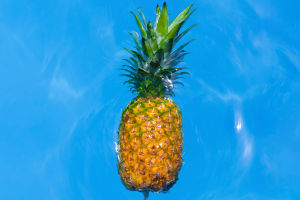Welcome, Lykkers! Peppers are versatile and vibrant vegetables that add flavor and color to a variety of dishes.
Whether you have a bountiful harvest from your garden or simply want to extend the shelf life of store-bought peppers, preserving them properly ensures you can enjoy their taste long after their peak season.
Below are practical, easy-to-follow tips on how to preserve peppers in different ways!
1. Freezing Peppers for Long-Term Storage
Freezing peppers is one of the most effective methods to preserve them for months. Start by washing and drying the peppers thoroughly. Cut them into the desired size—whether it’s strips, rings, or chopped—depending on how you plan to use them later. Remove seeds if you prefer.
Blanching peppers before freezing can help maintain their color and texture. To do this, place the peppers in boiling water for 2-3 minutes, then quickly transfer them to ice water to stop the cooking process. Once cooled, dry them and spread the peppers in a single layer on a baking sheet. Freeze until solid, then transfer to airtight freezer bags for long-term storage.
2. Pickling Peppers for Tangy Flavor
Pickling peppers is another excellent way to preserve them while adding a tangy, zesty twist to their flavor. For basic pickled peppers, start by slicing them into rings or keeping them whole, depending on your preference. Prepare a pickling solution with vinegar, water, salt, and sugar.
Bring the mixture to a boil, then pour it over the peppers in a sterilized jar. Add optional flavorings like garlic, herbs, or spices for a personalized touch. Seal the jars and allow them to cool. After refrigerating for 2-3 days, your pickled peppers will be ready to enjoy. This method keeps peppers flavorful for several weeks.
3. Drying Peppers for a Smoky Kick
Drying peppers concentrates their flavors, resulting in a smoky, intense taste that can be used in cooking or as a garnish. You can dry peppers in a food dehydrator, or for a more rustic method, hang them in a dry, well-ventilated space. Start by slicing large peppers in half or leaving smaller varieties whole.
If using a dehydrator, follow the manufacturer's instructions for temperature and drying time. Once dried, store the peppers in airtight containers, such as glass jars or vacuum-sealed bags. Dried peppers are perfect for making chili powders, seasoning blends, or even re-hydrating in soups and sauces.
4. Canning Peppers for Extended Storage
Canning peppers is a great way to preserve them while maintaining their crunch. The canning process involves sterilizing jars, preparing peppers by either slicing or leaving them whole, and packing them in jars with a mixture of vinegar or brine. Make sure to follow proper canning techniques to prevent bacteria and spoilage.
The jars need to be processed in a boiling water bath to ensure they seal correctly and remain safe to consume for up to a year. Once canned, peppers can be stored in a cool, dark place until ready to use. Pickled and pressure-canned peppers are great for a variety of meals.
5. Storing Fresh Peppers for Short-Term Use
If you prefer to keep your peppers fresh for a little longer, proper storage is key. Start by placing whole, unwashed peppers in the vegetable crisper drawer of your fridge. Make sure to keep them dry to avoid mold growth. Peppers typically last about a week when stored this way.
6. Infusing Olive Oil with Peppers
Consider infusing olive oil with peppers for a delicious, flavorful addition to your cooking. This can be done by heating olive oil gently and adding thinly sliced peppers. Let the mixture steep for 2-3 days, allowing the oil to absorb the rich flavors of the peppers. Store the infused oil in a dark, cool place, and use it for drizzling over salads, pasta, or roasted vegetables. Be cautious about storing infused oils for extended periods, as they can grow harmful bacteria if left too long at room temperature.
7. Fermenting Peppers for Probiotic Benefits
Fermenting peppers is not only an excellent preservation method but also adds probiotics to your diet. For this method, cut peppers into strips or rings, and pack them into sterilized jars with saltwater brine (water and non-iodized salt). Let the jars sit at room temperature for about 1-2 weeks, depending on the temperature in your home.
After the fermentation process, store them in the refrigerator. Fermented peppers are deliciously tangy and can be eaten on their own or used in recipes for added flavor and health benefits.
Preserving peppers at home is a simple and rewarding way to make the most of this delicious vegetable. Whether you prefer freezing, pickling, drying, or fermenting, each method helps you enjoy the flavors of peppers year-round. The key to successful preservation is understanding the needs of the peppers you have and choosing a method that works best for your culinary habits.
By preserving peppers properly, you not only reduce food waste but also ensure that the vibrant, fresh flavors of peppers are available whenever you need them!
5 Ways to Preserve and Store Your Peppers - Pepper Geek
Video by Pepper Geek


